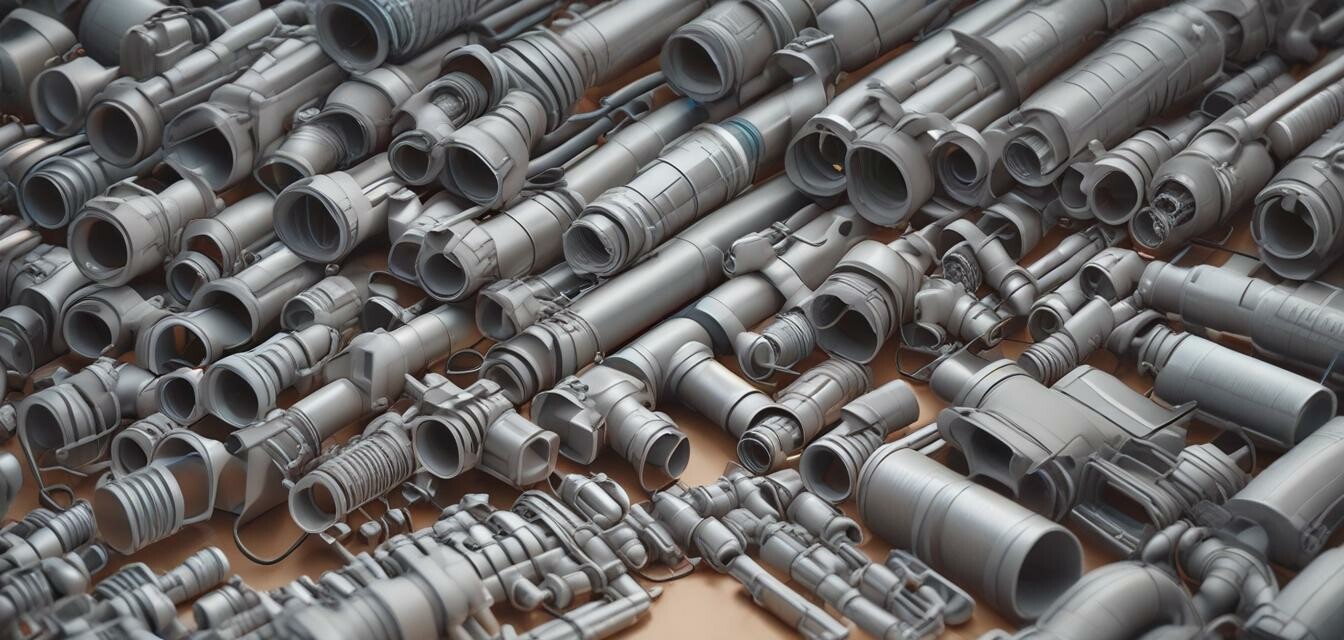
A Beginner’s Guide to Understanding Conduit Types
Key Takeaways
- Types of conduits include PVC, EMT, and flexible options.
- Each conduit type has specific advantages and best-use scenarios.
- Installation methods vary by conduit type and usage.
- Health and safety codes often influence conduit selection.
- Understanding conduit types helps improve installation efficiency.
For electricians and DIY enthusiasts alike, understanding the various types of conduits is essential. This guide provides insights into different conduit types, their applications, advantages, and some basic installation tips. Knowing how to choose the right type of conduit can significantly affect your project outcomes, ensuring safety and functionality.
What is a conduit?
A conduit is a protective tube used to house electrical wiring. It can be made from a variety of materials, each suited for different environments and application needs. The primary purpose of conduits is to protect electrical wires from damage, moisture, and environmental hazards while ensuring safety and proper functionality.
Different Types of Conduits
There are several types of conduits available for different applications. Here’s a breakdown of the most common types:
| Type of Conduit | Material | Uses | Advantages |
|---|---|---|---|
| PVC Conduit | Polyvinyl Chloride | Outdoor, wet locations, residential | Corrosion-resistant, lightweight, cost-effective |
| EMT (Electrical Metallic Tubing) | Steel | Indoor, commercial applications | Durable, provides grounding, easy to install |
| Rigid Metal Conduit (RMC) | Steel or aluminum | Industrial, heavy-duty applications | Robust protection, suitable for hazardous environments |
| Flex Conduit | Plastic or metal | Applications requiring bending and movement | Flexible, easy to install in tight spaces |
| Liquid-tight Conduit | Plastic with a water-tight seal | Wet and damp locations | Water-resistant, protects against moisture |
PVC Conduit
PVC conduit is favored for outdoor applications. It is lightweight and resistant to corrosion and moisture, making it an excellent choice for areas prone to weather exposure. Being cost-effective, it is often used in residential settings.
EMT (Electrical Metallic Tubing)
EMT is a steel tube that offers durability and provides grounding for electrical systems. It is often used indoors and is particularly popular in commercial applications for its sturdiness and ease of installation.
Rigid Metal Conduit (RMC)
This type of conduit is ideal for industrial settings and provides robust protection for electrical wiring. RMC is often found in hazardous locations due to its ability to withstand extreme conditions and provide a reliable barrier against environmental risks.
Flexible Conduit
Flexible conduit is perfect for installations that require bending or movement. It can be made from plastic or metal, and its adaptability allows it to be installed in tight spaces without compromising usability.
Liquid-tight Conduit
Designed for wet and damp locations, liquid-tight conduits are engineered with a water-tight seal. They are an excellent solution for areas where moisture protection is necessary, such as in outdoor settings and garages.
Installation Basics
Properly installing conduits requires understanding both local building codes and the specific characteristics of the conduit type selected. Here are general installation steps:
- Gather necessary tools and materials: conduit, fittings, connectors, and tools.
- Measure and cut the conduit to the required lengths.
- Prepare surfaces and ensure they are clean.
- Install conduit hangers and supports as specified by local codes.
- Connect conduit lengths and fittings, ensuring a tight fit to prevent moisture infiltration.
- Run the electrical wires through the conduit after installations.
Tips for Beginners
- Always check local building codes before starting your installation.
- Use proper tools to ensure safety during installation.
- When in doubt, consult with a professional electrician.
- Familiarize yourself with the type of wiring you will be running through the conduit.
- Wear safety gear, especially when cutting and installing metal conduits.
Pros
- Provides protection against physical damage to wires.
- Helps organize and manage electrical wiring efficiently.
- Improves safety by preventing electrical hazards.
- Various materials available to suit different environments.
Cons
- Can be costly depending on materials used.
- Installation can be labor-intensive.
- Some types may require special tools for installation.
Understanding conduit types is crucial for anyone involved in electrical work. For more information on electrical supplies, be sure to check out our conduit & conduit accessories page.
Choosing the right conduit can ensure safety, compliance with regulations, and optimal performance for your electrical installations. For more insights on tools and installations, explore our Buying Guides.